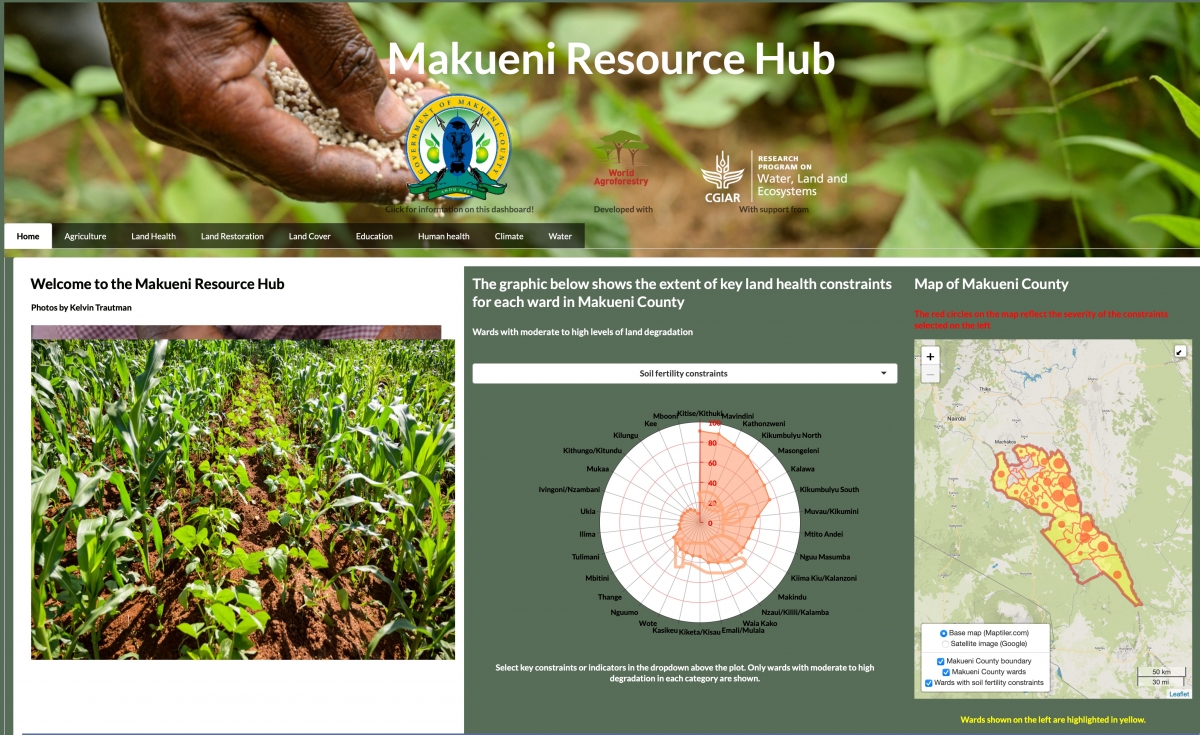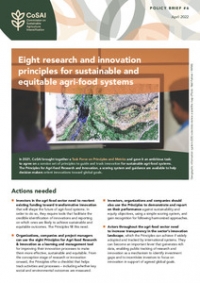There is often a disconnect between science and decision-making, as the data needed to support planning -- particularly local project and monitoring data -- are either scattered, inaccessible or not adapted to policy needs. At the Spatial Data Science and Applied Learning Lab (SPACIAL) at World Agroforestry, we have been advancing the concept of decision dashboards to address this challenge.
Decision dashboards are open access online interfaces that use data visualization to present important metrics and key performance indicators. Consolidating and presenting data in this way offers decision-makers a practical resource they can use to obtain a quick overview of a situation and respond with appropriate and effective strategies.
The dashboards are co-designed with stakeholders using the Stakeholder Approach to Risk Informed and Evidence-based Decision-making (SHARED) process -- a decision-support methodology that aims to encourage more inclusive, inter-sectoral and inter-institutional thinking. With the user in mind, the SHARED process promotes human and user-centered design to ensure ownership, usability and sustainability of the dashboards.
Decisions on land management are already benefiting from such information systems. To monitor land health in the Rift Valley in Kenya, for example, the Laikipia Resilience Diagnostics Tool brings together data via the Ecosystem Health Surveillance System. This builds on the Land Degradation Surveillance Framework (LDSF) while also integrating indicators from other information sources, including local partners and accessible databases on climate, education, population and human health.
Dashboards have been developed at national and county level for Kenya, Malawi, Zambia, Ethiopia and Tanzania and can be accessed through the Landscape Portal. Work on additional information systems is ongoing and reflects the needs of stakeholders. For instance, in line with its strategic agenda, Kenya's Makueni County has requested specific functionality and indicator sets to support its decision-making across the sectors of agriculture, water, livestock and education. Ultimately, the goal is to improve integration of data across sectors that are often extremely compartmentalized.
Each new dashboard reflects improvements as we refine the backend platform, learn new tools and enhance the stakeholder engagement process. Given the challenge of identifying and gaining access to good-quality data from local partners, the SHARED process is crucial. It also supports the building of capacity among partners through workshops and other interactions, and draws attention to the need for better data management and improved accessibility and sharing. Embedding data access and use into end user organizations is vital to generating and sustaining interest in the dashboards.
We are starting to find ways around these challenges with the Makueni County Resource Hub, which is currently under development with support from WLE. In addition to ensuring co-design and inclusion from the outset, we have a local person supporting data collection, processing and collation. We are also focusing on how dashboards can be tailored to the data and evidence needs of different groups of stakeholders and ensuring sufficient time for capacity building for data access and use. Initial responses to the prototype have been very encouraging.
According to Ruciah Ngila, Makueni County Department of Gender, Children, Culture and Social Services, "The Resource Hub will be useful during policy and decision-making as well as program development. During public participation, this data will suggest well-thought interventions." Recommending that population data also be overlayed, Benson Mutuku, Makueni County Department of Lands, notes that the "heat map [of health facilities] shows geographical concentration of health facilities. It is great that at a glance one can see that." These comments demonstrate that useful data are being incorporated into the decision dashboards; equally important, that these are being presented in an accessible format that allows analysis.

As our capacity to enhance the accessibility of evidence grows, we will be able to provide end users -- from government officials to communities -- with richer and more useful tools to support critical decision-making processes. The engaged process behind the development of decision dashboards imparts to stakeholder groups the value of data and evidence in decision-making and enhances their capacity to use such information. This is likely to bring about transformative change in the use of evidence in decision-making.
---
Thrive blog is a space for independent thought and aims to stimulate discussion among sustainable agriculture researchers and the public. Blogs are facilitated by the CGIAR Research Program on Water, Land and Ecosystems (WLE) but reflect the opinions and information of the authors only and not necessarily those of WLE and its donors or partners.
WLE and partners are supported by CGIAR Trust Fund Contributors, including: ACIAR, DGIS, FCDO, SDC, Sida and others.













